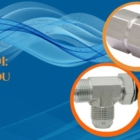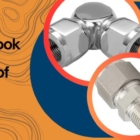Needle valves are essential components in various industries, providing precise control of flow rates in fluid systems. Mcneil Instruments offers a comprehensive range of needle valves designed to meet the diverse needs of its customers.
What is a Needle Valve?
A needle valve is a type of valve used to regulate the flow of fluids with high precision. It consists of a slender, tapered needle-like stem that fits into a corresponding seat, controlling the flow passage diameter. This design allows for fine adjustments to the flow rate, making needle valves suitable for applications requiring precise control, such as instrumentation, analytical chemistry, and hydraulic systems.
Types of Needle Valves
1. Screwed Bonnet Needle Valve
This type of needle valve features a threaded bonnet that screws onto the valve body, providing a secure seal. It is commonly used in low to medium pressure applications and is suitable for general-purpose fluid control.
2. Union Bonnet Needle Valve
Union bonnet needle valves have a bonnet that can be easily removed for maintenance or repair. They are designed for applications requiring frequent access to the valve internals, such as sampling systems and pressure gauges.
3. Rising Stem Needle Valve
Rising stem needle valves feature a stem that moves linearly upwards as the valve is opened, providing visual indication of the valve position. They are commonly used in systems where precise control and visual feedback are necessary, such as laboratory equipment and flow metering devices.
4. Non-Rising Stem Needle Valve
Non-rising stem needle valves have a stem that does not move vertically as the valve is operated. Instead, the stem rotates to control the flow rate. This design is suitable for applications with limited space or where vertical movement is restricted.
5. Multiport Needle Valve
Multiport needle valves have multiple inlet and outlet ports, allowing for versatile flow configurations. They are commonly used in complex fluid systems where multiple flow paths are required, such as distribution manifolds and mixing applications.
6. How Needle Valves Work
The operation of a needle valve is based on the interaction between the tapered needle and the valve seat. When the valve is closed, the needle is fully inserted into the seat, blocking the flow passage. As the valve is gradually opened, the needle is lifted away from the seat, increasing the flow area and allowing fluid to pass through. The fine taper of the needle allows for precise control of the flow rate, with small adjustments resulting in proportional changes in flow.
Key Components of a Needle Valve
Valve Body: The main housing of the needle valve, which contains the flow passage and other internal components.
Bonnet: The removable cover that provides access to the valve internals for maintenance or repair.
Stem: The slender, tapered shaft that controls the position of the needle within the valve seat.
Needle: The tapered, needle-like element that fits into the valve seat to control the flow rate.
Seat: The machined surface against which the needle seals to regulate the flow passage diameter.
Applications of Needle Valves
Needle valves find applications in a wide range of industries and systems where precise control of fluid flow is required. Some common applications include:
Instrumentation and Control Systems: Needle valves are used in analytical instruments, pressure gauges, and control panels to regulate the flow of gases and liquids with high accuracy.
Hydraulic and Pneumatic Systems: Needle valves are employed in hydraulic and pneumatic systems to control the flow of fluids and gases, ensuring smooth operation and precise positioning of actuators and valves.
Laboratory Equipment: Needle valves are integral components of laboratory equipment such as chromatography systems, spectrometers, and gas analyzers, where precise fluid control is essential for accurate measurements and analyses.
Process Industries: Needle valves are used in process industries such as chemical processing, petrochemical, and pharmaceuticals to control the flow of process fluids in reactors, pipelines, and storage tanks.
Oil and Gas Production: Needle valves are employed in oil and gas production facilities for wellhead control, flowline isolation, and sampling applications, where they ensure safe and efficient operation of production processes.
Needle valves play a crucial role in various industries and applications where precise control of fluid flow is essential. Mcneil Instruments offers a comprehensive range of needle valves designed to meet the stringent requirements of its customers. With their durable construction, reliable performance, and precise control capabilities, Mcneil Instruments needle valves are trusted by engineers and technicians worldwide for critical fluid control applications. Whether it’s instrumentation, laboratory equipment, or industrial processes, Mcneil Instruments needle valves provide the precision and reliability needed to ensure optimal performance and safety.






